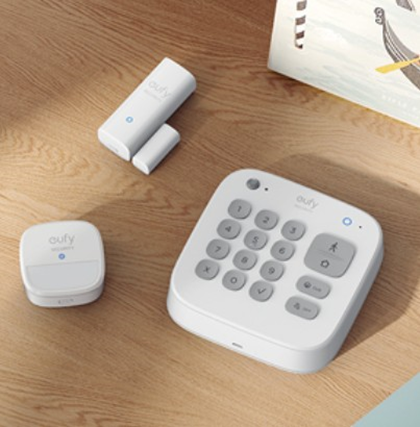Home alarm systems are intended to safeguard your home and loved ones from possible hazards such as burglary, fires, and carbon monoxide leaks. These systems are becoming more complex, combining traditional security measures with new technologies. They not only notify you in the event of a threat, but they also create a sense of security by merging many components that function flawlessly together. Modern alarm systems, which include sensors and surveillance cameras, provide high-tech solutions that meet a variety of purposes, assuring homeowners’ safety and convenience.

Key Components of a Home Alarm System
Control Panel and Keypad
The home alarm system’s control panel functions as its brain. It links all of the system’s components and is usually found at the entry to the house. The keypad allows homeowners to activate and disarm the system while also displaying alarms and status information. This panel interfaces with sensors, cameras, and other devices to ensure that the system functions together seamlessly. Most control panels nowadays are user-friendly, with touchscreen interfaces and simple displays that allow homeowners to easily handle their security system.
Sensors: Door, Window, and Motion
Sensors are the most important component of home alarm systems. Door and window sensors are installed at entrance points to detect unlawful openings, and motion sensors are strategically placed around the property to monitor activity. When any of these sensors are activated, they transmit a signal to the control panel, which activates the alarm. Motion sensors frequently employ infrared technology to detect body heat and can distinguish between humans and pets to prevent false alerts. These sensors work together to promptly identify any attempted break-ins.
Surveillance Cameras and Video Integration
Surveillance cameras are a necessary component of modern home security systems. They offer real-time footage and recordings that can be accessed remotely using cell phones or PCs. Video integration enables homeowners to continually watch their property, posing a visible deterrent to possible invaders. In addition to security, many cameras have capabilities such as night vision, motion detection, and two-way audio, which increase the system’s efficacy. With video surveillance, homeowners can monitor both the interior and exterior of their property at all times.

How Smart Technology Enhances Security
Remote Monitoring via Mobile Apps
Remote monitoring is one of the key benefits of integrating smart technology into home alarm systems. Homeowners may use mobile applications on their cell phones to check the condition of their system, receive warnings, and even see live footage from security cameras. This function gives homeowners peace of mind, especially when they are away from home. The ability to remotely operate and monitor the system means that security is always accessible, allowing for prompt reactions to any security threat.
Integration with Smart Home Devices
Smart door locks, thermostats, and lights are just a few of the smart home appliances that often communicate with modern home alarm systems. Homeowners may automate their security installations using this link. For instance, the system may instantly turn on the lights and lock the doors when the alarm is triggered. Additionally, some systems may be used with voice assistants like Google Assistant or Amazon Alexa, which makes the security system easier to use and more controllable.
AI-Powered Threat Detection
The way home alarm systems identify and react to possible threats is being completely transformed by artificial intelligence (AI). AI-powered systems are better able to detect anomalous activity or potential intrusions by analyzing patterns in the data gathered by sensors and cameras. To cut down on false alarms, AI can, for example, recognize faces that are unfamiliar or actions that don’t follow regular patterns. Home alarm systems are getting smarter, more user-friendly, and more capable of managing security threats as AI technology advances.
Conclusion
Modern home alarm systems give homeowners a dependable means of protecting their houses and families by combining state-of-the-art technology with conventional security measures. These systems are now more effective than ever because of elements like sensors, security cameras, and intelligent technology integration. Home security is now more accessible and adaptable because of features like AI-powered danger detection, smart device integration, and remote monitoring. By purchasing a home alarm system, you may rest easy knowing that your property is always guarded.

